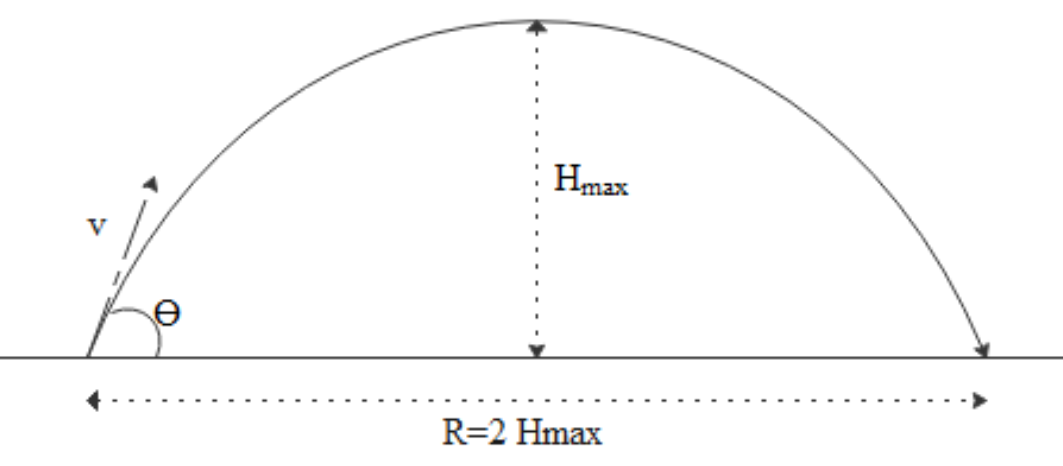Question
Question: A particle is projected with a velocity v such that its range on a horizontal plane is twice the gre...
A particle is projected with a velocity v such that its range on a horizontal plane is twice the greatest height attained by it. The range of the projectile will be (g is the acceleration due to gravity).
A. 5g4v2
B. 5v24g
C. gv2
D. 5g4v2
Solution
This is the case of projectile motion where the particle is projected with some angle to the horizontal. The acceleration acting on the projectile is only in a vertical direction because gravity will be acting only in the vertical direction and along horizontal direction, there is no force. The formulas we have for horizontal range and maximum height are used here.
Formula used:
\eqalign{
& R = \dfrac{{{u^2}\sin 2\theta }}{g} \cr
& H = \dfrac{{{u^2}{{\sin }^2}\theta }}{{2g}} \cr}
sin2θ=2sinθcosθ
Complete step-by-step solution:
__
When a particle is projected with some angle to the horizontal then that particle will have both horizontal displacement and vertical displacement. Since there will be no force along the horizontal direction the velocity along the horizontal direction will be the same throughout its motion while there is a force along the vertical direction so velocity along the vertical direction will vary.
The maximum horizontal displacement a projectile can have is called the range and the maximum vertical displacement the projectile can have is called the maximum height.
The range is given with formula R=gu2sin2θ where ‘u’ is the initial velocity and θ is the angle made by the velocity with horizontal and ‘g’ is the acceleration due to gravity.
Maximum height is given by H=2gu2sin2θ where ‘u’ is the initial velocity and θ is the angle made by the velocity with horizontal and ‘g’ is the acceleration due to gravity.
It is given that R=2H. By substituting the formulas we have we will get
R=2H
⇒gu2sin2θ=2g2u2sin2θ
\eqalign{
& \Rightarrow \sin 2\theta = 2\sin \theta \cos \theta \cr
& \Rightarrow \dfrac{{{u^2}2\sin \theta \cos \theta }}{g} = \dfrac{{2{u^2}{{\sin }^2}\theta }}{{2g}} \cr
& \Rightarrow \tan \theta = 2 \cr
& \Rightarrow \sin \theta = \dfrac{2}{{\sqrt 5 }} \cr
& \Rightarrow \cos \theta = \dfrac{1}{{\sqrt 5 }} \cr}
After getting tangent value we can get sinusoidal and cosecant value because from tangent value we have opposite side and adjacent side, we have to apply pythagoras theorem to get the hypotenuse and from that we can get sin and cos values.
Now substitute those sin and cos values in range formula.
\eqalign{
& R = \dfrac{{{u^2}2\sin \theta \cos \theta }}{g} \cr
& \Rightarrow R = \dfrac{{{u^2}2(\dfrac{2}{{\sqrt 5 }})(\dfrac{1}{{\sqrt 5 }})}}{g} \cr
& \Rightarrow R = \dfrac{{4{u^2}}}{{5g}} \cr}
In the question initial velocity is given as ‘v’ hence answer will be R=5g4v2
Option A will be the correct answer.
Note: The formulas which we have are applicable only if the acceleration due to gravity is constant and not varying. We can find maximum height too as they had given the relation between maximum height and the horizontal range.
